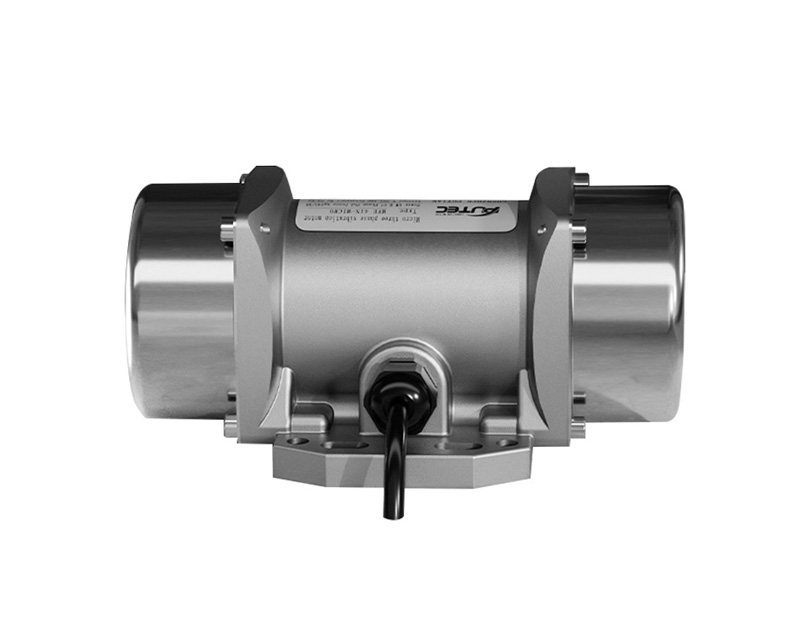- E-mail: andyli@putiamotor.com
- Tel: +86-18923719730
- Vibration Motor Manufacturer
Web Menu
Product Search
Exit Menu
Industry News
Enhancing Vibration Control With Brushless 12V Motor And Driver
 Apr-11-2024
Apr-11-2024
 Industry News
Industry News
Vibration control is paramount in various industries, ranging from automotive to aerospace, where precision and reliability are critical. The advent of brushless 12V motors coupled with advanced vibration motor drivers has revolutionized vibration control systems, offering improved efficiency, reliability, and performance.
Understanding Brushless 12V Motors:
Brushless 12V motors are a type of electric motor that operates without brushes, resulting in reduced friction, noise, and maintenance requirements. These motors utilize electronic commutation to achieve precise control of rotor position and speed, making them ideal for applications requiring high precision and efficiency.
Benefits of Brushless 12V Motors:
1. Enhanced Efficiency: Brushless 12V motors offer higher efficiency compared to traditional brushed motors, professional to reduce energy consumption and heat generation.
2. Extended Lifespan: The absence of brushes eliminates wear and tear, resulting in a longer motor lifespan and reduced maintenance costs.
3. Improved Control: Electronic commutation allows for precise control of motor speed and torque, enabling smoother operation and better performance.
4. Compact Design: Brushless 12V motors are typically more compact and lightweight than brushed motors, making them suitable for space-constrained applications.
5. Reduced Electromagnetic Interference: Brushless motors generate less electromagnetic interference (EMI), and less risk of interference with sensitive electronic equipment.
Introduction to Vibration Motor Drivers:
Vibration motor drivers are electronic devices designed to control the operation of vibration motors, providing precise speed and direction control. These drivers play a crucial role in optimizing the performance of vibration control systems, ensuring smooth and reliable operation.
Key Features of Vibration Motor Drivers:
1. PWM Control: Pulse-width modulation (PWM) allows for precise control of motor speed, enabling fine-tuning of vibration intensity.
2. Current Limiting: Built-in current limiting protects the motor from overloading and overheating, ensuring safe and reliable operation.
3. Direction Control: Vibration motor drivers support bidirectional control, allowing for both clockwise and counterclockwise rotation of the motor shaft.
4. Voltage Regulation: Voltage regulation circuitry maintains a stable voltage output, ensuring consistent motor performance across varying load conditions.
5. Overload Protection: Overload protection features prevent damage to the motor and driver in case of excessive current or voltage spikes.
Applications of Brushless 12V Motors and Vibration Motor Drivers:
1. Automotive: Brushless 12V motors and vibration motor drivers are used in automotive applications such as active suspension systems, seat massagers, and vibration-based safety alerts.
2. Consumer Electronics: These components find applications in consumer electronics such as smartphones, game controllers, and wearable devices for haptic feedback and vibration alerts.
3. Industrial Automation: In industrial automation, brushless 12V motors and vibration motor drivers are utilized in conveyor systems, sorting machines, and robotic actuators for vibration control and feedback.
The combination of brushless 12V motors and advanced vibration motor drivers offers exceptional levels of efficiency, reliability, and performance in vibration control systems. With their compact design, precise control capabilities, and robust features, these components are poised to drive innovation across various industries, enhancing product functionality and user experience.
Furthermore, the integration of brushless 12V motors and vibration motor drivers enables the development of sophisticated vibration control algorithms, allowing for adaptive and intelligent vibration management. This capability is particularly advantageous in dynamic environments where vibration conditions may vary rapidly. By leveraging the inherent benefits of brushless motor technology and advanced driver functionalities, engineers can optimize vibration control systems for enhanced stability, accuracy, and user comfort. As industries continue to demand higher levels of performance and reliability, the synergy between brushless motors and vibration motor drivers will undoubtedly play a pivotal role in shaping the future of vibration control technology.
Recommended Products
Products
Contact Us
- Address: No.6 Building, Wanfeng 98 Industrial City, Shajing Street, Baoan District, Shenzhen, Guangdong, China.
- Phone: +86-18923719730 / +86-0755-27460501
- Fax: +86-0755-27460606
- E-mail: andyli@putiamotor.com
Copyright © Shenzhen Putian Vibration Motor Co., Ltd. All Rights Reserved.



 English
English русский
русский Português
Português عربى
عربى فارسی
فارسی








